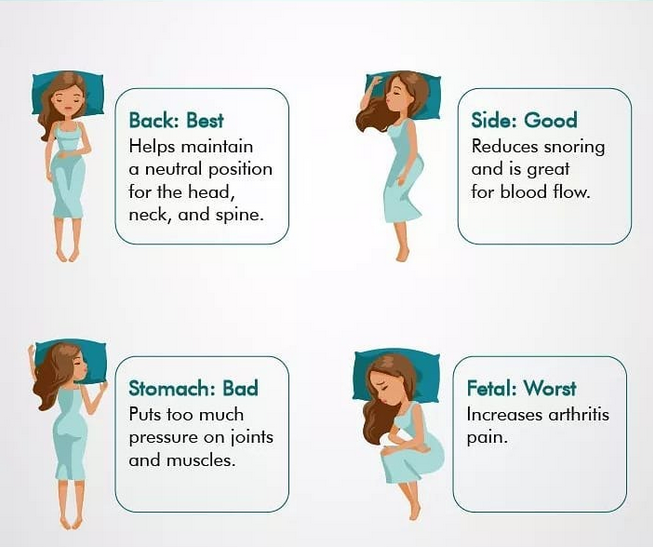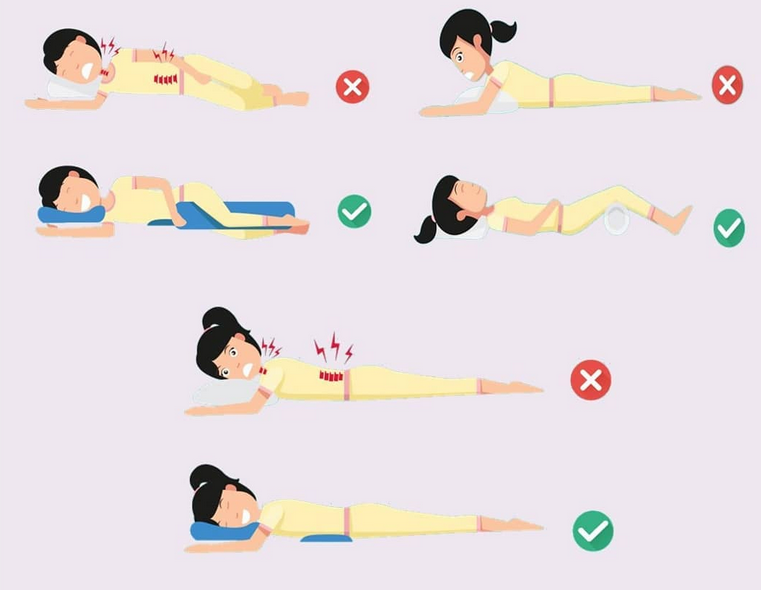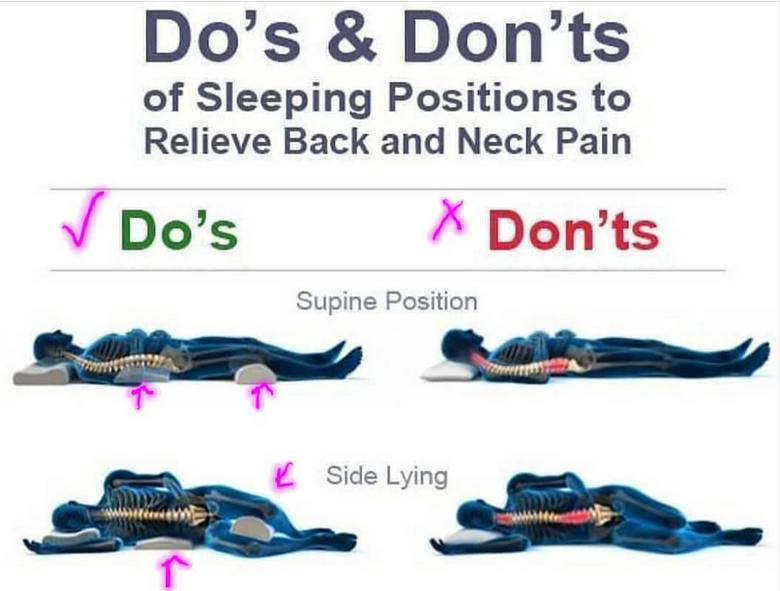Some people never mind what position they are sleeping in when that resting moment comes knocking. However, sleeping isn’t just sleeping, but it needs some specific positions to get the most out of the ‘power nap,’ ‘shut-eye,’ or rest.
“What position should I sleep in?” This should be the first question you should ask yourself before laying on the bed every night. To answer this question, first, you should consider the most common positions which might be best for several medical conditions, including pregnancy. Read on to figure out the best and worst sleeping positions and the most common sleeping positions’ pros and cons.
- Supine (Back)

The supine sleep occurs when the person is lying flat on the backside. The legs are usually extended in a neutral position where the arms may lie flat on either side of the body. The arms may also be bent with the arms lying across the chest or on the face or behind the head.
Pros
For those who can comfortably breathe during sleep, this may as well be the best sleeping position for you. This position allows the body to be fully supported by the mattress and pillow. Placing a supporting pillow strategically under the knees will reduce pressure and musculoskeletal pain.
- This position is helpful if you experience chronic back, hip, or neck pains.
- Raising feet above the heart will relieve peripheral edema (swelling of the feet and ankles).
- With this position, the impacts of congestive heart failure are reduced.
- This position is recommended for infants to reduce the risk of sudden infant death syndrome (SIDS).
Cons
Several people feel supine sleep is the best position for them. However, those with trouble breathing during sleep may find that lying on the back only worsens the situation. This manifests itself in louder snoring.
- This position causes fatigue with some people
- It causes insomnia (especially frequent awakenings)
- It causes snoring (as earlier mentioned)
- Supine sleep is said to cause short-term memory loss
- Mood disorders (anxiety or depression)
- It poses the person with higher chances of getting a heart attack, heart failure, and stroke
Left side
Also known as the lateral position, the body is positioned with the head and chest, lying on the left side. Some may put the arm either under the body or slightly extended or forward, placing pressure on the left shoulder
Pros
This position counteracts the impacts of supine sleep and is reported to help those with snoring problems optimize breathing. If a right-sided joint, often shoulder or hip, is in pain, it may be eased in this position. This position also facilitates spooning (laying closely side by side with a partner). A pregnant person may find placing a pillow under the knees or the belly and laying in this position eases the pressure to the bladder and back pain.
Cons
Unfortunately, the left lateral position isn’t for everyone. When sleeping in this position, the internal organs can shift towards the left, resulting in the lungs heavily weighing on the heart, thus causing heart damage. This increased pressure on the heart may result in worsening in heart failure, and the increased pressure on the heart pushes towards the kidneys resulting in the frequent urge to urinate at night.
Right side

This position is the exact opposite of the left side. The head and torso are lying on the right side. Like the left side, the arm may be placed under the body or slightly forward or extended with pressure applied on the right shoulder. The legs may be positioned stacked upon each other or slightly staggered.
Pros
This position avoids the adverse effects of supine sleep. If a left-sided joint is in pain, sleeping in this position helps relieve the pain. With this position, bed partners are provided the opportunity to spoon if they are facing the right.
Cons
With the gravity dragging down the internal organs to the right, this position may drag the heart down towards the right, thus suppressing the right lung. The suppression will resort to the lung’s squeezing, thus reducing the oxygenation of the blood and worsening symptoms of those with related diseases. Pressure on the right arm’s nerves may cause neuropathy or compression injuries. When the pressure applied on the arm becomes too much, this may cause complications to the right arm, shoulder, lower back, and right hip.
Read also: Find a coach online and jump start your life
Prone (Stomach)
This is the least common sleep position. The face is turned to the side to facilitate breathing. The arms may be tucked under the body, placed on the sides, or laid flat on the bed’s side or left hanging off the bedside. The legs are usually extended and not bent, unlike the other positions.
Pros
This position helps avert the adverse conditions of supine sleep while maintaining the body from the shifting of body organs in the thorax. Laying on the softer side of the body is better for the body (particularly the chest and stomach). Tucking the arms close to the body can provide psychological comfort and conserve heat during the cold.
Cons
This position may result in neck pains because it strains the associated muscles of the shoulder and upper back. The ensuing pressure on the nerves within the arms and hands may cause problems. Breathing is also hindered due to the body’s weight lying on the neck reducing lung volumes by restricting movement in the rib cage and diaphragm.
Upright
As expected, the upright position may as well be the most comfortable sleeping position. In this position, the person is laid on the back and can be enhanced by using a wedge or a raised pillow to lift the body’s upper side for the average body posture. Adjustable mattresses that are automated are advised to be set to an angle of raising the head by about 20 to 30 degrees.
Pros
With the head raised, this position allows free air passage all around the body with sufficient air flowing through the lungs, which means a lower chance of snoring and, if properly positioned, can relieve pain.
Cons
It is nearly impossible to change positions during sleep and with this position having the head raised at such a degree at night. The benefits of the other positions may not be realized with such a position. However, the cons of the other positions may still be found in this position. This is mostly if mouth breathing occurs.
Therefore, it is important to note that not all positions are right for you as you sleep. Several factors should be considered before choosing a sleeping position;
- Whether you are in pain anywhere in your body.
- Sleep-disordered breathing or snoring.
- Several medical conditions.
- The optimal position of your head and neck
Although choosing which position to sleep in is made sub-consciously, it is important to make it wisely to avoid muscle pains and joint pains in the morning or while still sleeping. An untreated sleep disorder may trigger restless sleep. However, proper treatment and testing may provide you with the magical sleep you genuinely deserve no matter how long you sleep
Read also: Top 10 body builders in the world 2020








